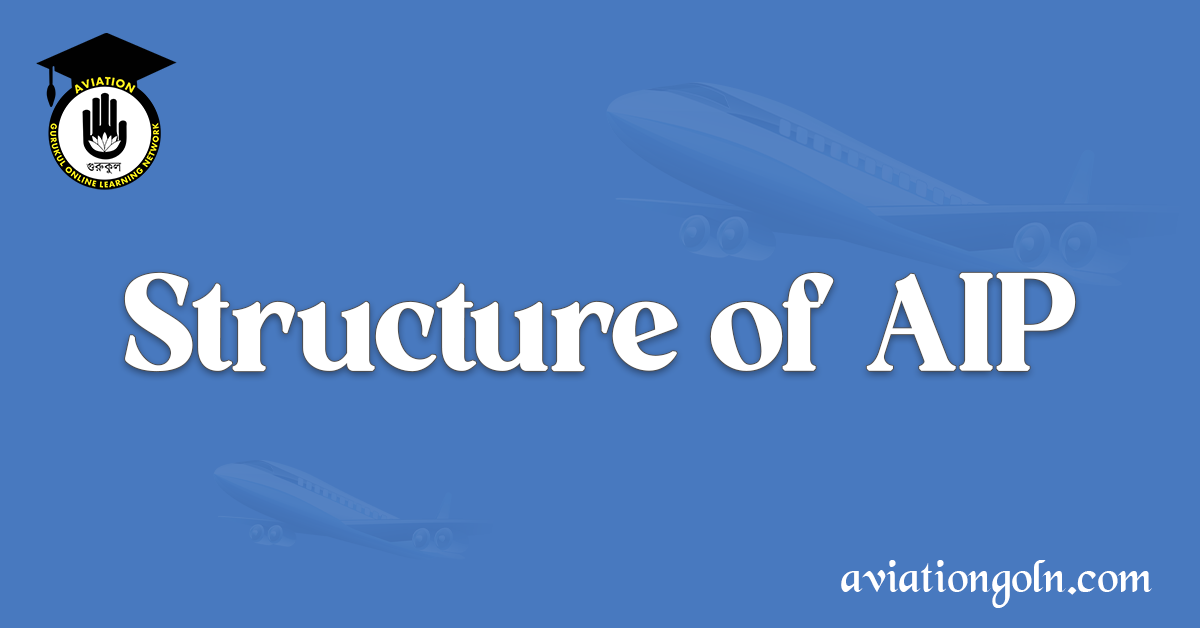Structure of AIP: The Aeronautical Information Publication (AIP) is an essential document for the aviation sector. As a vital tool, it provides detailed and up-to-date information that pilots, air traffic controllers, and other aviation professionals need to ensure safe, efficient, and compliant flight operations within a country’s airspace. Understanding the structure of the AIP is crucial for all stakeholders involved in aviation activities.
Structure of AIP: Aeronautical Information Publication (AIP)
1. Introduction to AIP
The AIP is a part of the global aviation framework set by the International Civil Aviation Organization (ICAO), aiming to standardize and harmonize aviation operations worldwide. It contains extensive information about the rules, guidelines, and facilities related to aviation within a specific country. This publication is regularly updated to reflect the ever-evolving nature of the aviation sector.

2. Components of AIP
The AIP comprises three main parts:
- AIP General (GEN)
- AIP En-route (ENR)
- AIP Aerodromes (AD)
2.1. AIP General (GEN)
The GEN section contains general information about the country’s AIP and related services. This section typically includes:
- GEN 0: Table of Contents and record of AIP amendments/changes.
- GEN 1: National regulations and requirements for entering and leaving the country, like customs, immigration, and health procedures.
- GEN 2: Information about the available meteorological services and the procedures for obtaining weather reports and forecasts.
- GEN 3: Details about the provision of aeronautical charts.
- GEN 4: Charging policies for aerodrome and air navigation services.
2.2. AIP En-route (ENR)
The ENR section deals with information required by aircraft during the en-route phase of their flight. This section generally includes:
- ENR 0: Table of contents for the ENR section.
- ENR 1: General rules and procedures, including air traffic services and airspace classifications.
- ENR 2: Details about the airways, including routes, reporting points, and other related data.
- ENR 3: Information about communication and surveillance facilities, like radio navigation aids.
- ENR 4: Flight plans and related procedures.
- ENR 5: Navigation warnings, which might include details about hazards like military exercises, bird activity, or volcanic ash clouds.
- ENR 6: En-route charts.

2.3. AIP Aerodromes (AD)
The AD section provides detailed information about aerodromes/heliports, including those used for international air traffic. It encompasses:
- AD 0: Table of contents for the AD section.
- AD 1: General aerodrome/heliport information including national regulations and procedures.
- AD 2: Data for each individual aerodrome/heliport. This includes details like runway dimensions, available services, emergency procedures, and more.
- AD 3: Specifics about heliports.

3. AIP Amendments and Supplements
Given the dynamic nature of aviation, the AIP needs regular updates:
- AIP Amendments: These are routine updates made to the publication. They’re often scheduled and pertain to major changes like new air routes or aerodrome modifications.
- AIP Supplements: These are temporary in nature and are used for unexpected or non-routine changes. Once the information is no longer valid, the supplement is removed.

4. Aeronautical Information Circulars (AIC)
While not a direct part of the AIP, AICs provide vital information on long-term forecast changes or general operational interest. They’re used to convey knowledge that doesn’t fit into the AIP’s regular structure.

5. Importance of AIP
The AIP serves multiple crucial roles:
- Safety: It ensures that all aviation stakeholders have a reliable source of updated information to conduct safe operations.
- Standardization: By adhering to ICAO standards, the AIP helps standardize procedures globally.
- Legal Protection: Having a centralized, standardized document helps in case of disputes or investigations.

Understanding the structure of the Aeronautical Information Publication is crucial for all aviation stakeholders. With its comprehensive, regularly updated information, the AIP serves as a cornerstone for the safe, efficient, and standardized operations of the global aviation system. It exemplifies the concerted effort of international bodies, national governments, and individual aviation professionals to ensure safety and compliance in the skies.
See more:
- GOLN Aeronautical Information Service Book : Table of Contents
- GOLN Aircraft and Engines Book : Table of Contents
- GOLN Airframe and Systems Book : Table of Contents
- GOLN Airline & Airport Marketing Management Book: Table of Contents
- GOLN Airline Operations Book: Table of Contents
- GOLN Airport Strategic Planning Book : Table of Contents
- GOLN Avionics System Book: Table of Contents
- GOLN Flight Management System Book : Table of Contents
- GOLN Flight Mechanics Book: Table of Contents
- GOLN Principles of Flight Book: Table of Contents
- GOLN Aviation Career Book : Table of Contents
